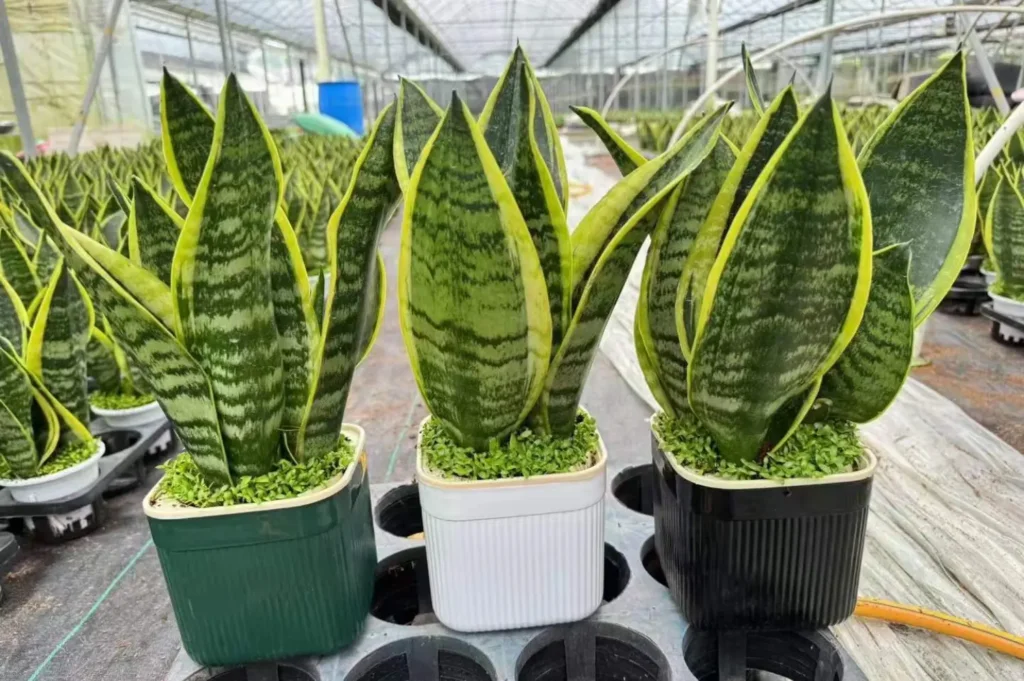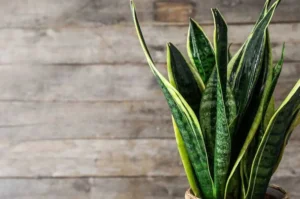The snake plant, often admired for its sleek look and easy-care nature, holds many surprises beyond its striking appearance. Scientifically known as Dracaena trifasciata (formerly Sansevieria), this plant is more than just a stylish addition to your home. So, what’s the secret behind its growing popularity?
Let’s uncover the fascinating features, hidden benefits, and simple care tips that make the snake plant a true gem in the world of indoor gardening.
A Quick Introduction to the Snake Plant
The snake plant comes from tropical regions of West Africa. It has thick, upright leaves that often feature green patterns with yellow or white borders. This plant has earned many nicknames, such as mother-in-law’s tongue and Saint George’s sword, due to its sword-like leaf shape.
Because the snake plant stores water in its leaves, it’s classified as a succulent. This feature allows it to withstand dry conditions, making it a great choice for people who want a low-maintenance houseplant.
The Hidden Benefits of the Snake Plant
1. Cleans the Air Day and Night
A major secret of the snake plant is its ability to purify indoor air, even at night.
Unlike most plants that release oxygen only during the day, snake plants use a unique method called CAM photosynthesis, which allows them to take in carbon dioxide and release oxygen after dark. This makes them ideal for bedrooms, helping to improve air quality while you sleep.
They also absorb harmful airborne substances like:
- Formaldehyde
- Benzene
- Xylene
- Toluene
2. Almost Maintenance-Free
Snake plants are known for being extremely easy to care for. Even if you forget to water them now and then, they will keep thriving.
Here’s why they’re so popular:
- They tolerate low light and grow well in bright, indirect light.
- They don’t need to be watered often (every 2 to 3 weeks is usually fine).
- They rarely attract bugs or diseases.
- They grow slowly, so they don’t need frequent repotting.
It’s a perfect plant for busy people or those new to plant care.
3. Helps Control Indoor Humidity
Snake plants can release moisture into the air through a process called transpiration. This small but steady increase in humidity can be helpful in dry environments, especially during winter when indoor air becomes dry due to heating systems.
4. Believed to Bring Positive Energy
In Feng Shui and some cultural traditions, snake plants are said to bring protection and positive vibes.
Their upright leaves are thought to cut through negative energy and shield the home. People often place them near doorways or corners to promote a sense of balance, safety, and harmony.
5. Keeps Insects Away Naturally
Another hidden talent of the snake plant is its ability to repel insects. The plant produces saponins, which are naturally toxic to many bugs. Having one near windows or entryways may help reduce the presence of mosquitoes and other unwanted pests indoors.
6. Caution: Not Safe for Pets
One important thing to know is that while snake plants are safe for humans, they are toxic to cats and dogs if eaten. Ingesting the leaves may cause an upset stomach, vomiting, or diarrhea in pets. Keep the plant in a location where curious pets can’t reach it.
Why the Snake Plant Stands Out
What makes the snake plant different from other houseplants?
Unique Photosynthesis at Night
Most houseplants photosynthesize only during the day. But the snake plant uses CAM (Crassulacean Acid Metabolism), a special technique that lets it perform this process at night too. This helps it conserve water while also filtering the air 24/7.
Natural Air Filter
According to studies, including one by NASA, snake plants can remove pollutants from indoor air. They do this by absorbing toxins and improving the overall quality of your environment. This makes them an excellent choice for homes, offices, and apartments.
Best Places to Keep a Snake Plant
To get the most out of your snake plant, placement is crucial. Here are some great locations:
- Bedroom: For better air and restful sleep.
- Office Desk: To reduce stress and add greenery.
- Living Room Corners: For Feng Shui benefits and stylish décor.
- Entryways: To greet guests with a welcoming, clean-air vibe.
Common Misunderstandings About Snake Plants
Let’s clear up a few myths:
- Myth: Snake plants don’t need water at all.
Fact: They still need occasional watering, just less often than most plants. - Myth: They grow rapidly.
Fact: Snake plants grow slowly, especially in low light. - Myth: They can live in total darkness.
Fact: While they tolerate low light, complete darkness will eventually harm them.
Simple Care Tips to Keep Your Snake Plant Healthy
You don’t need a green thumb to care for a snake plant. Just follow these simple steps:
Light:
They prefer bright, indirect light but can handle low-light areas.
Water:
Wait until the soil is completely dry before watering again. Overwatering can cause root rot.
Soil:
Use well-draining soil. Cactus or succulent mixes work best.
Pot:
Choose a pot with drainage holes to prevent soggy soil.
Temperature:
The ideal range is between 60°F and 85°F (15°C to 29°C). Keep them away from cold drafts.
Fertilizer:
Feed with a mild liquid fertilizer once a month during spring and summer.
Final Thoughts:
So, what is the secret of the snake plant?
It’s not just one thing; it’s the combination of beauty, strength, and function. The snake plant offers a rare mix of clean air, peace of mind, and almost no need for maintenance. Whether you’re short on time, space, or gardening skills, this plant fits effortlessly into your lifestyle.
From purifying air at night to standing tall in any corner of your home, the snake plant quietly works its magic. Once you bring one into your home, you’ll understand why it’s more than just a houseplant (it’s a natural companion for modern living).






